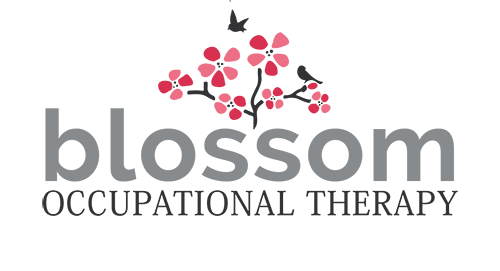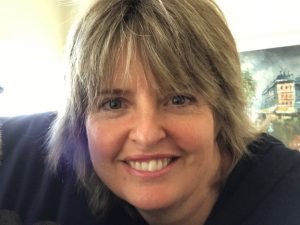Melinda van Zyl – Director
Who am I?
I obtained my bachelor’s degree in occupational therapy at the University of Stellenbosch in South Africa and went on to complete a postgraduate qualification in occupational therapy (paediatrics, neurology and psychiatry) at the University of the Witwatersrand in South Africa.
Over a career spanning more than 30 years (the last 15 years being in Australia), I have worked in the hospital setting, in specialist and mainstream schools, in early childhood intervention service and private clinics. Wonderful children and families have taught me an incredible amount in fields as varied as motor dysfunction, perceptual processing disorders, mental health challenges, and developmental delays and have filled my working days with wonder, joy and an intense sense of fulfillment.
My qualifications and work experience have been verified and accredited with the Council of Occupational Therapists Registration Boards (Australia and New Zealand). I am registered with the Australian Health Professional Regulation Agency and am a member of Occupational Therapy Australia.
I am an accredited provider of mental health services under the Better Access to Mental Health Scheme, as well as other Medicare funding plans. I also provide services to self-, and plan-managed NDIS clients.
Which approaches form the framework for the service we provide families?
Over the past 30 years we have had training in a wide range of therapeutic frameworks and interventions. Here are just a few that have shaped the way we work with children and their families:
1. Strengths-based and Capacity Building
Kids do well if they can.
This phrase was borrowed from Ross Greene’s Collaborative and Proactive Solutions model. Have a look at this video where Greene explains a little of what this means.
At Blossom Occupational Therapy we believe that children will use the skills they possess. However, when we expect of them to use more skills than they possess, they compensate through strategies that may not work well for themselves or others.
Let’s look at an example: A child will tell you she is anxious if she has the skill to regulate her emotions and has the words to say “I am anxious” . However, if she has not yet learnt those skills, she might refuse to participate any further, or she may become restless or have a meltdown. It is up to us to teach her the skills. And we use her specific strengths to develop those areas of her development that requires extra input. Let’s say she is good with visual processing. We can use pictures and stories to teach her to recognise when she is anxious and to find ways to let others know. And when she is ready we can make her aware of the unique ways that her nervous system calms itself and how she can create these calming experiences.
Kids do well if they can. And it is up to the adults in their lives to make it possible for them to ‘can’.
We want to support parents to advocate for their child in their education setting, as well as the wider community. We aim to do this by giving information about child rights, inclusion supports and resources, linking families with other organisations or support groups.
The Coaching Approach
We believe that parents have a wealth of knowledge about what works well in enhancing their child’s development and what gets in the way. We believe that parents can be supported to develop problem solving frameworks to help their child not only when they are little but right through his/her life.
We want to up-skill parents to enable them to analyse why their child is experiencing difficulty in any area of development and to work out how best to support their child. By developing in them a solid understanding of their child’s strengths and challenges, of a wide range of strategies that can support their child, by giving them access to the right resources and teaching parents specific techniques, we can empower parents to provide their child with therapy. And this therapy will happen not only throughout the day but throughout their child’s childhood, and even beyond.
Natural environments
We believe that children learn best from the important people in their lives. We believe that children – like all of us – learn best when that learning is meaningful to them. This is most likely to happen in the child’s home and education centre, favourite playground and friendship circle. For more information as to why we prefer working in the child’s natural environments see our FAQs
Therefore, if we teach children new skills within their natural environments learning will occur faster and will be specific to the actual situation where they are experiencing difficulty.
Family centred
We work closely with your family to achieve the goals you believe are important. During visits the therapist will share knowledge and expertise with the family so that therapy continues naturally throughout your family’s daily routines.
Collaborative teamwork
Outcomes focused (evidence based practice)
Together with you we draw up clear measurable goals to address those areas that are critical for the child’s development and well-being and are important to you. We review these informally on a regular basis, and more formally every 6 months.
Responsive care-giving and teaching/ Attachment theory
Research tells us that the first 3 years of a child is characterised by exceptional growth in the brain. Research has also found that this process can be greatly enhanced when the baby is engaged in a nurturing secure relationship with a caregiver that is responsive to the child’s cues/ needs. The Make the Connection Program is a hands-on program that provides parents with practical strategies on how to develop a close bond and to respond to their child in a way that will give their child a solid foundation for all future stages of life.
With training in the Make the Connection Program and the Piccolo tool (Parenting Interactions with Children: Checklist of Observations Linked to Outcomes), we have solid frameworks for supporting parents/ caregivers to form secure nurturing relationships with their infant and toddler.
Sensory integration Therapy
With more than 25 years of experience in the specialised field of sensory integration we have a solid understanding of how sensory input can be modified to provide the child with the “just right” challenge, thereby changing the way he processes sensory information. This changes the way the child manages daily activities such as concentrating in class, sitting still during mat time, having his hair cut, or for the baby how to settle for a nap, how to tolerate textures of food . For more information on Sensory Integration Therapy see FAQs
Other
We have experience and/or training in the following:
- Make the connection
- ABA
- TEACCH
- Alert program
- Wilbarger Deep Pressure and Proprioception Protocol
- Social stories/ scripts
- PALS Social skills program
- Toilet time
- Hanen More than Words Program (social communication)
- Signing
- DIR

